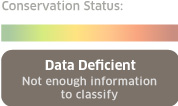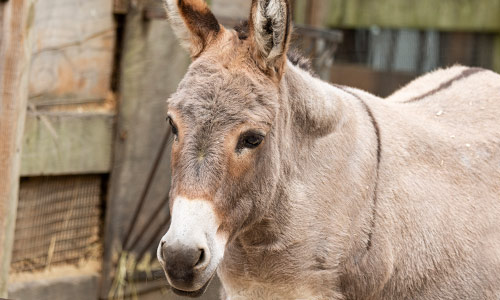Sardinian Dwarf Donkey
Equus africanus asinus
About the Sardinian Dwarf Donkey

Class: Mammalia
Order: Perissodactyla
Family: Equidae
Genus: Equus
Species: africanus asinus
The Sardinian dwarf donkey is one of the smallest donkey breeds in the world. Coat patterns and colors vary, though grey (or dun grey) is the most common color. They are very calm, making them popular pets for children and families. These donkeys enjoy human attention and are relatively trainable. They are herd animals and prefer to live with other animals, especially other equines (horses, ponies, other donkeys, etc.)
Sardinian Dwarf Donkey Facts
Appearance:
This is one of the smallest donkey breeds in the world. Coat patterns and colors vary, though grey (or dun grey) is the most common color. Sardinian dwarf donkeys have a lighter-colored belly. They have large ears and compact bodies.
Behavior:
Sardinian dwarf donkeys are very calm, making them popular pets for children and families. They enjoy human attention and are relatively trainable. They are herd animals and prefer to live with other animals, especially other equines (horses, ponies, other donkeys, etc.)
Size:
Males are larger than the females. They range from 30 to 36 inches in height at the withers (the highest point of the shoulder), though donkeys have been recorded as small as 26 inches in height. They have a compact body and usually weigh 250 to 500 pounds.
Diet:
Hay and grass, though their diet can be supplemented with other types of horse feed and grain.
Reproduction:
Gestation lasts 11-13 months and mothers typically have only one foal. Females (jennies or jennets) are sexually mature at 3 years, whereas males (jacks) are sexually mature at 18 months, though they are usually not bred until 3 years of age.
Habitat/Range:
These donkeys were originally bred on the islands of Sardinia and Sicily in the Mediterranean Sea in the 1700's. Since they're no longer needed as pack and work animals, these donkeys are rarely bred in their original habitat and have become very rare in Sardinia and Sicily. However, they're now somewhat common in the United States, Australia and the United Kingdom as pets.
Median Life Expectancy:
30 to 35 years
You Can Find This Animal in the Franklin Farm
Franklin Farm Chat
Join us daily at 10:00 a.m. for a Franklin Farm Chat!
You May Also Like
At Franklin Park Zoo:
At Stone Zoo:











